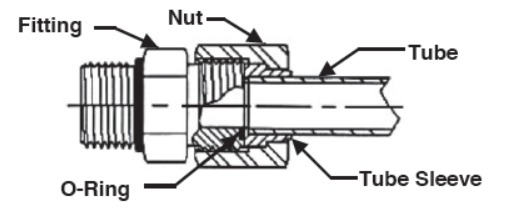Face seal fittings, often overlooked but crucial components in various industries, hold a significant place in the world of engineering. In this comprehensive exploration, we unravel the mystery behind face seal fittings and shed light on their diverse applications. From understanding the term “face seal fitting” to delving into the specific question, “Where are face seals used?”, we embark on a journey to discover the versatility and importance of these fittings in modern technology.
What is Face Seal Fitting?
A face seal fitting is a specialized connector designed to create a tight seal in fluid-handling systems. It features components such as a body, nut, and an O-ring seal to ensure leak-free connections.
Importance of Versatility in Fluid Conveyance
Versatility in face seal fittings is crucial as it allows these connectors to adapt to a variety of applications, providing efficient and reliable sealing in different industrial settings. Understanding this versatility is essential for optimizing fluid conveyance systems.
The Anatomy of a Face Seal Fitting
A. Components of a Face Seal Fitting
A face seal fitting consists of several key components, including a body, nut, and an O-ring seal. The arrangement and quality of these components significantly influence the fitting’s performance and adaptability.
B. Material Choices and Their Impact on Versatility
The materials used in face seal fittings, ranging from stainless steel to various alloys, greatly influence their versatility. The right material choice ensures the fitting can withstand different operating conditions and environments.
Where Are Face Seals Used?
A. Hydraulic Systems
Face seal fittings find extensive use in hydraulic systems, where they are employed to prevent leaks in high-pressure applications. Their robust design ensures that hydraulic fluids remain contained, maintaining the efficiency and safety of hydraulic machinery.
B. Pneumatic Systems
Pneumatic systems, which use compressed air to transmit force and energy, rely on face seal fittings to maintain air-tight connections. These fittings are commonly used in pneumatic cylinders, valves, and other components, ensuring seamless operation without air leakage.
C. Chemical Processing
In chemical processing industries, where handling corrosive substances is routine, face seal fittings play a vital role. Their leak-tight seal prevents the escape of hazardous chemicals, safeguarding both the equipment and the environment.
D. Medical Devices
Face seal fittings are utilized in medical devices, particularly those that involve the transfer of fluids or gasses. These fittings ensure sterile connections, crucial in medical applications where contamination must be avoided at all costs.
E. Semiconductor Manufacturing
The semiconductor industry relies on ultra-pure environments during the manufacturing process. Face seal fittings are used in semiconductor equipment to maintain the integrity of the controlled atmospheres, preventing any contamination that could compromise the delicate semiconductor components.
Advantages of Face Seal Fittings
A. Leak-Proof Sealing
The O-ring seal in face seal fittings ensures leak-proof connections, critical for preventing fluid loss and maintaining system integrity.
B. High-Pressure Environments
Face seal fittings excel in high-pressure environments, maintaining their sealing efficiency even under extreme pressure conditions.
C. Resistance to Vibration
The design of face seal fittings provides excellent resistance to vibrations, a crucial feature in environments prone to mechanical oscillations.
D. Corrosion Protection
Advanced materials and coatings used in face seal fittings offer exceptional corrosion resistance, enhancing their durability and longevity.
Selection and Installation Guidelines
A. Matching the Fitting to the Application
Choosing the right face seal fitting that suits the specific application and its requirements is essential for optimal performance and efficiency.
B. Thread Specifications and Torque Guidelines
Understanding thread specifications and applying the correct torque during installation are crucial to ensure a secure and leak-tight joint.
C. Proper Installation Techniques
Following proper installation techniques is paramount for the longevity and efficient functioning of face seal fittings within the system.
Conclusion
Face seal fittings, with their precise design, superior materials, and adaptability, represent a critical component in fluid conveyance systems across various industries.
Understanding and harnessing the versatility of face seal fittings is key to optimizing fluid handling processes in hydraulic, pneumatic, aerospace, automotive, and other industries, promoting efficiency, reliability, and sustainability.
Post time: Nov-02-2023


